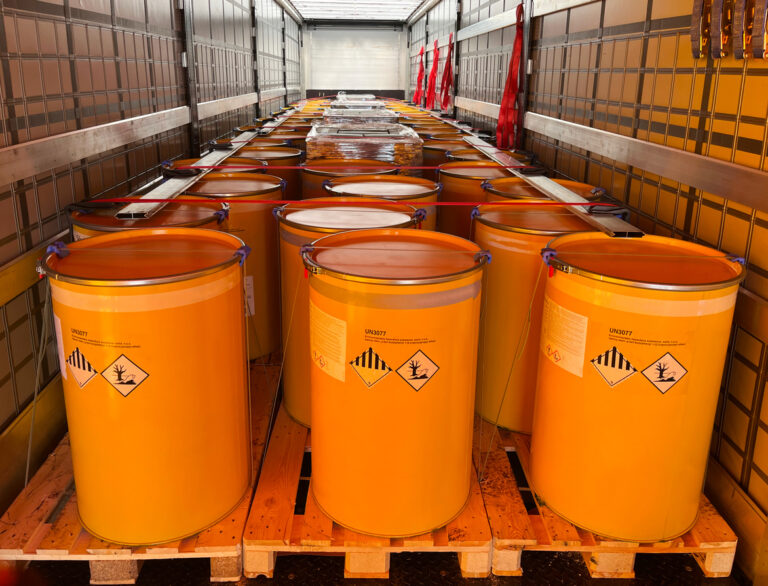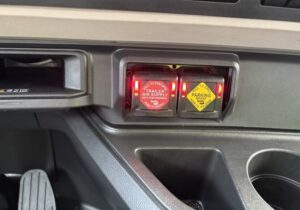WASHINGTON – Stericycle will pay $9.5 million as part of a settlement related to environmental violations in the operation of its former hazardous waste management business.
“Stericycle repeatedly failed to ensure the proper transport, management, and storage of hazardous waste – a job that they were paid to do and entrusted to perform on behalf of customers nationwide,” said Cecil Rodrigues, acting assistant administrator for EPA’s Office of Enforcement and Compliance Assurance. “EPA is committed to ensuring companies comply with the law and to protecting communities from the potential risks associated with the mismanagement of hazardous wastes.”
Systemic Operation Problems
According to a joint press release, the Environmental Protection Agency (EPA) and the Department of Justice (DOJ) announced a settlement agreement with Stericycle for systemic, nationwide violations of the Resource Conservation and Recovery Act (RCRA) from May 5, 2014, through April 6, 2020. The settlement resolves Stericycle’s failures to properly manage hazardous waste, accurately maintain required manifest records when transporting hazardous waste, and timely submit information for thousands of manifests to EPA’s electronic manifest database, the e-Manifest system.
The proposed stipulation and order of settlement agreed to by Stericycle requires payment of a $9.5 million civil penalty. It is one of the largest civil penalties ever paid for RCRA violations. The settlement is subject to approval by the U.S. District Court for the Southern District of New York.
“Today, we hold Stericycle responsible for flouting hazardous waste management requirements while operating a nationwide hazardous waste business and risking significant potential harm to human health and the environment,” said attorney for the United States Matthew Podolsky of the Southern District of New York. “This penalty should put other waste management firms on notice that we will hold them accountable when they shirk their legal responsibilities and put the public and environment in harm’s way.”
Ceasing Operations
Stericycle is a waste management company that operated a nationwide hazardous waste transportation, storage, treatment and disposal business until it sold the vast majority of the business on April 6, 2020. Stericycle operated 13 RCRA-permitted hazardous waste treatment, storage and disposal facilities (TSDFs) and 44 waste transfer facilities. On April 6, 2020, Stericycle completed the sale of its “Stericycle Environmental Solutions” hazardous waste business and, since that date, has largely ceased managing hazardous waste in the United States. However, Stericycle remains accountable for its systemic RCRA violations prior to that sale.
Routine Violations
Between May 5, 2014, and the date of sale, Stericycle routinely violated RCRA requirements related to tracking and transportation of hazardous waste, as alleged in detail in the complaint. Stericycle routinely lost track of hazardous waste while transporting it, sent hazardous waste to disposal facilities that were not the ones its customers had chosen, or delivered hazardous waste shipments without the required manifests. It also failed to comply with requirements for resolving and reporting discrepancies between hazardous waste identified on a shipping manifest and the hazardous waste received by Stericycle at its facilities for disposal, and it failed to timely return signed manifests to generators and timely submit them electronically to the EPA.
Additionally, Stericycle violated RCRA by storing hazardous waste in transfer facilities when not authorized to do so, either because the storage period was longer than the 10 days permitted by RCRA regulations or because overall transportation times for the hazardous waste shipment exceeded those constituting “the normal course of transportation” under RCRA regulations. All of this conduct violated RCRA hazardous waste regulations critical to preventing substantial risks to human health and the environment.
E-Manifest Violations
The hazardous waste manifest is the key to tracking who generated the waste, the kind of waste being shipped and any potential dangers the hazardous characteristics of the waste pose and where and how the waste is disposed. This information is critical for ensuring that hazardous waste is handled properly and safely, and in the case of an emergency, giving first responders the information needed to handle leaks or spills that may occur during transport or in the event of an accident.
The EPA’s e-Manifest system is the database for all hazardous waste shipments in the United States that are generated, transported and disposed of in the United States. The system’s requirements ensure that our nation’s hazardous waste data is transparent, easily accessible, and publicly available. Complete and on-time submissions to the e-Manifest system by companies like Stericycle are required by RCRA and essential to maintaining awareness of the hazardous waste activities in our communities and on our highways and rail systems.
WM acquired Stericycle in November 2024.













